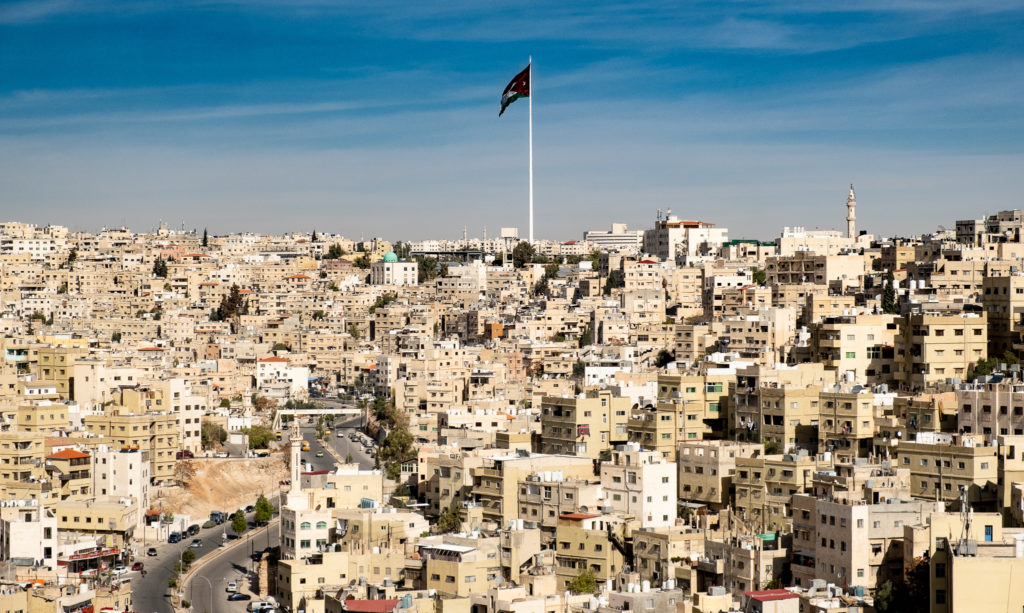
Desto3 is back in business – big time.
This episode of “Where in the world is Pablo?” finds our intrepid hero in any one of 7 middle eastern countries beginning in Jordan, what some Jordanians refer to as the 52nd U.S. state, Israel being the 51st. (Sorry, Puerto Rico and for that matter D.C. – nobody over here gives a fig about your plight regarding statehood rights, and figs are plentiful here.)
You never know what the man on the street in any foreign nation really thinks about their country’s relationship to America and Americans, and I always assume that folks who work in the tourism industry will have a somewhat skewed opinion, (for better or worse) given that much of their livelihood is dependent on US tourist dollars and near constant social intercourse with actual Americans or other westerners in the course of their workweek. But even acknowledging this, my take on the affection Jordanians manifest for the U.S. is that it is pretty damn genuine and remarkably positive. And, the Jordanians on the whole seem absolutely incapable of deception and utterly guileless. Another note on the nature of the locals: with no exception, every single Jordanian we came in contact with exhibited a sweetness and a sincerity that could take your breath away. I was put in mind of Margaret Atwood’s Crakers (Oryx and Crake) minus the nudity and other obvious differences. (BTW, I highly recommend the Atwood trilogy, just fyi, for long journeys. And, random travel tip: always take an epic novel with you on any long trip. For those boring mid-transit hours.)
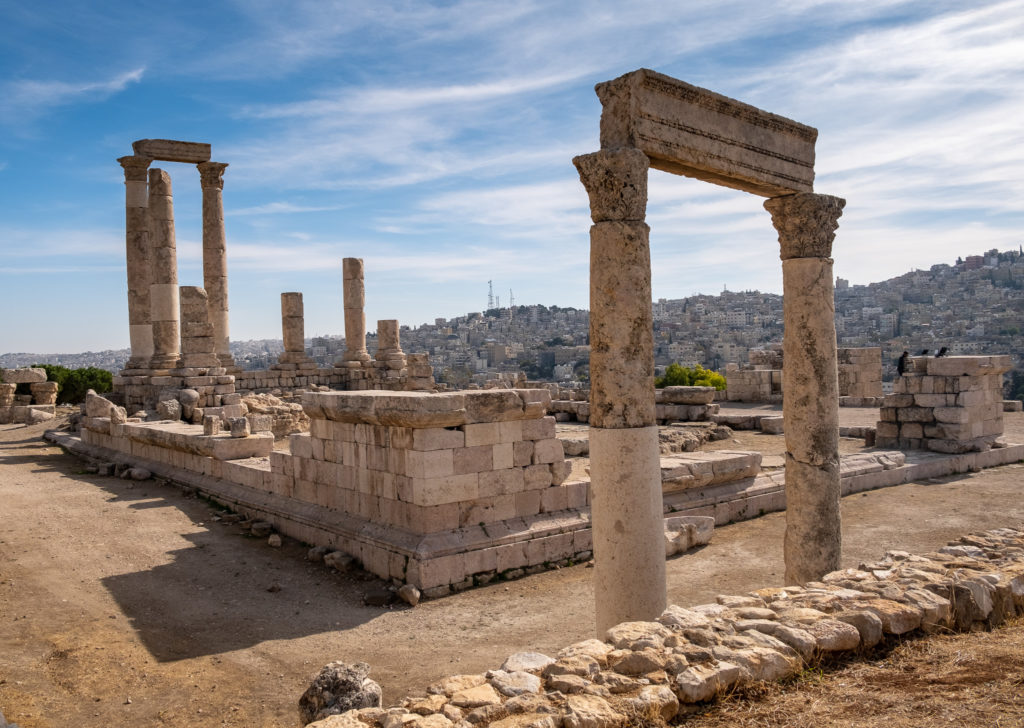
Day one: we spent the day in and around Amman viewing nearby sites that really should be Unesco World Heritage sites but somehow missed the list. First the Citadel, which, as Citadels go, is right up there. Reminds me of my dear friends Holly and Jan who always comment, “I wonder how many slaves perished to build THAT?” In this case the answer is, plenty. There’s a museum inside the Citadel that chronicles the history. You can visit via Wikipedia for the same info if you are curious. The day we visited the Citadel’s amphitheater it was in preparation for a big event being thrown by the king. I don’t know what the occasion was but it is notable that this “venue” is still being used as a party site. Alas, the Desto3 folks were not invited to attend.

Next we moved on to Jerash, an ancient/modern city about an hour’s drive from Amman. The ruins of the ancient city are in a constant state of excavation and renovation. Evidence of some kind of ancient Neolithic civilization dates life there to 7500 B.C. What has been unearthed already displays a history of the occupation of the old city by the cycle of domination by the usual suspects in World History 101. I.E. the Greeks, the Romans, the Byzantines, a brief failed attempt by the Christian Crusaders, and finally the Islamic dynasties that maintain ownership and occupation to this very day.
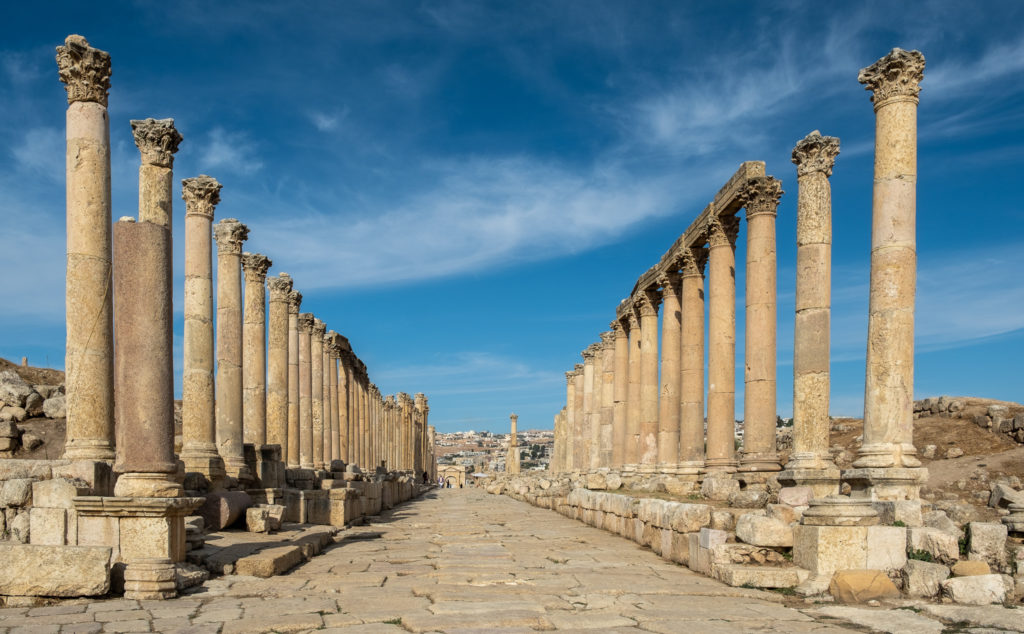
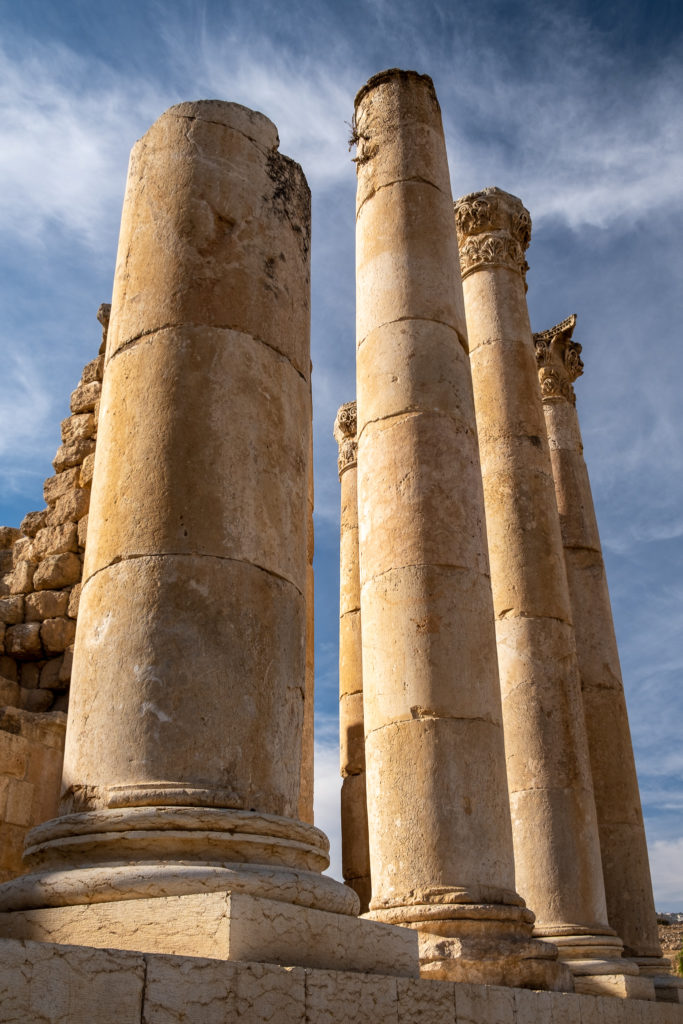
There’s a pretty extensive Rue du Crapola just inside the gates but the shop owners are actually very chill and the few I spoke with were friendly, curious and unaggressive. Again, more of the local charm prevailed.
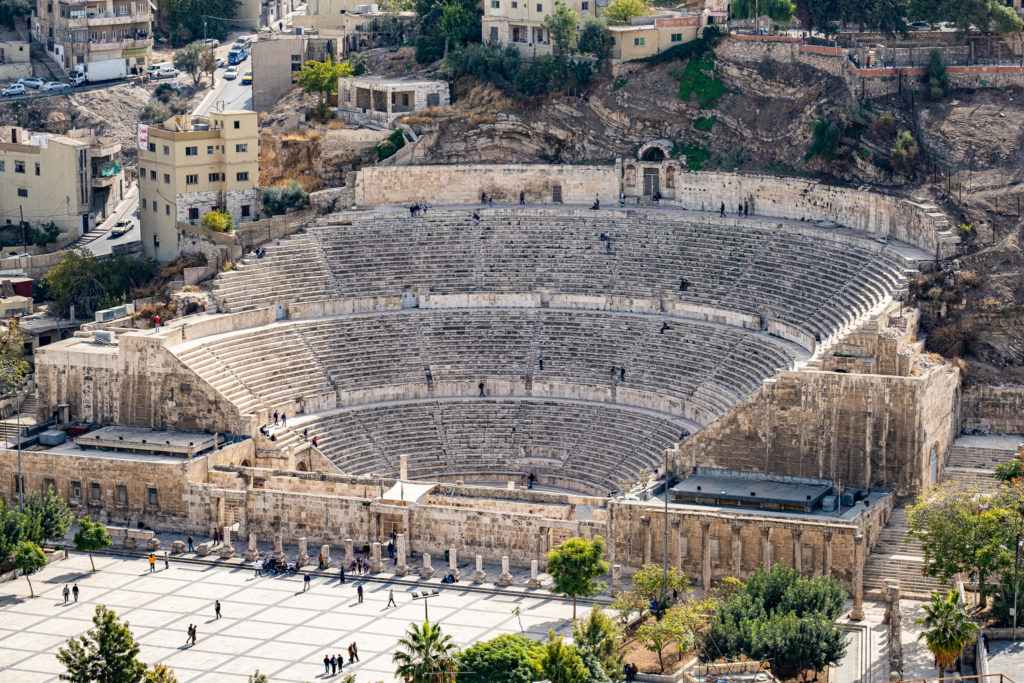
Our day guide inside the city walls of ancient Jerash was not exactly bitter about the world’s failure to adequately acknowledge Jerash. It was more like he blamed a failure of Jordan’s public relations capabilities. He knew (and listed for us) all the other world heritage sites and opined vociferously that Jerash deserved to be recognized every bit (and maybe more) than they did. It IS quite spectacular. And it is HUGE. The magnificence of the reclaimed structures including the columns in every period rival Pompei, the Roman Coliseum, and the Greek Parthenon. You get a sense of what’s to come as you enter through Hadrian’s Gate (more on this in a sec). It just gets better and better (see photos).
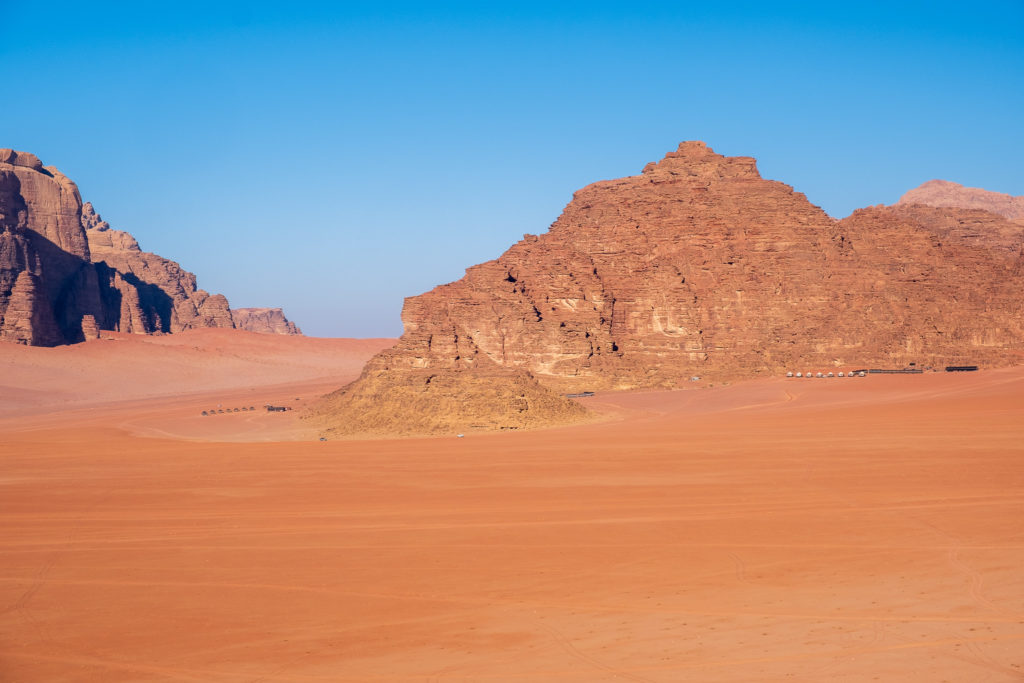
On the second day in Jordan I spent 4 hours in the back of a compact Ford speeding through the desert from Amman to Wadi Rum, the “Holy Valley” or the Valley of the Moon. The landscape is so barren it conjures up movie moonscapes. Indeed more than a couple Hollywood movies, including the blockbuster MARS (with my fave, Matt Damon) was shot on location here in Jordan’s desert. At times I could have been en-route from LA to Vegas. Flat and bleak and in the summer, muy caliente.. Then you enter the red valley and you are reminded much of Sedona, AZ if you’ve ever been. The sand is like red flour and the youth and the tourists like to run barefoot down the dunes in it. (Me, maybe 20 years ago, but my hip surgeon would not approve of any such foolishness now. My partner “ran” down, but not with what anyone here or anywhere would call “alacrity”.
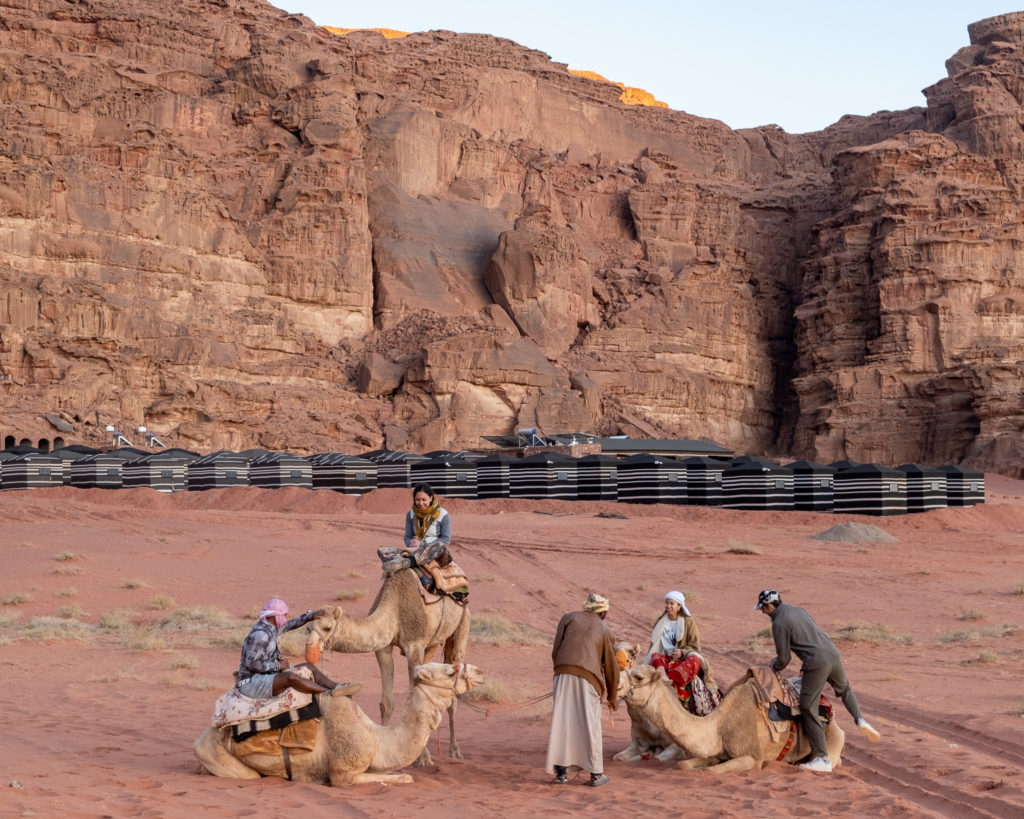
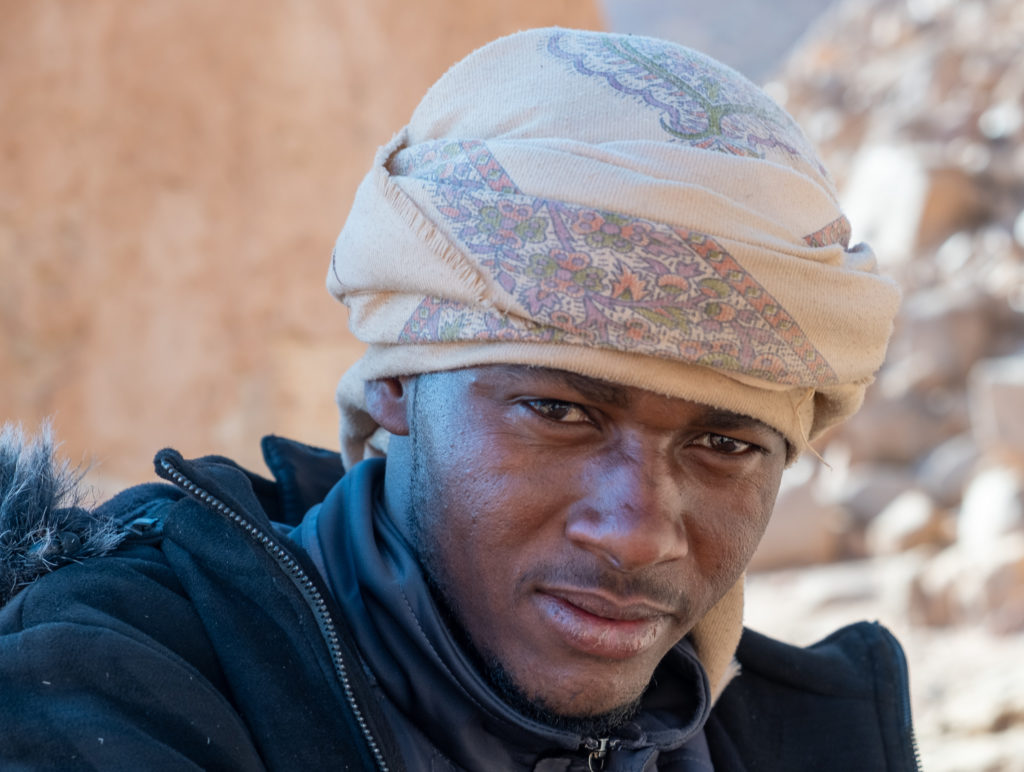
There are many overnight camps in Wadi Rum varying from luxurious to basic and the prices range accordingly. Our camp was a mix of Bedouin style tents and plastic, air-tight domes that allowed us to star gaze all night long from bed. We justified the extra expense by noting that it’s highly unlikely we’ll ever be back again and I must say, it was worth every extra penny. There’s just nothing like lying under a night sky in Wadi Rum to fuel the contemplations of your relative insignificance in the Universal scheme of things. Unless of course you’re doing the same thing in the red sand desert of Namibia.

Meanwhile the local Bedouin tribe are still basically nomadic and they OWN the Wadi Rum. From a distance you see their many 4X4s careening through the desert like motorized beetles all carrying Western tourists to the various points of interest and stellar viewing sites. These “desert tours” are a principle source of income now. I cannot say enough about the graciousness of the Bedouin. Few are really proficient in English and most still live as the tribe has for hundreds of years. We must seem very odd to them and yet they are so generous and kind it breaks your heart a little. I hope the Wadi Rum stays this way but I have fears that with more and more tourism, the jade will set in and even the sweetest guys will get polished and savvy. This will be too bad. It may be inevitable however as Jordan is not oil rich like the rest of the gulf and they will, out of necessity, rely on tourism for income. In addition, they export a lot of agricultural products, unlike most of the rest of this region, and so far, Jordan is the ONLY country in the middle east to invest significantly in alternative power. A decent representation of wind farms already exists and one thing they have plenty of is wind.

On the way back to Amman from the Wadi Rum we visited Petra. You really do need much more than a day to take all of Petra in. Our guide recommended 5 days minimum. He was magnificent but, there’s only so much you can cover if you are rushing along. If you plan to go, I’d give it minimum 3 days and you should stay in the new city of Petra to do it. The long walk through a rock walled canyon takes over an hour and if you’re not up for the hike you can hire a carriage. Walking IN is not hard as it’s slightly downhill. Walking OUT is a little trickier. We opted for the donkey ride up the fire/emergency road (20 minute ride instead of an hour and a half walk back-did I say, uphll?). The fire road route is REALLY steep. I’d guess 14% incline or more so I felt really bad for my poor donkey but I did give him a wee tip (recommended by our guide and then, as if we’d forget, also by the donkey’s manager – seriously, who doesn’t tip their donkey?) on the bitter end of his sojourn, so we’re good with the hardworking donkeys of Petra.


Hustling back to make the iconic sunset photo over the Dead Sea and to stay over again in Amman to catch our flight to Qatar, we raced along the coast that gives you a view of Jericho in Israel. It is THAT close. I have to say, it does give one pause, given both ancient and recent history, to stand on the high bank of the Dead Sea in Jordan and look across to the lights of Jericho in Israel. Perhaps one of the most moving world vistas.

Back to Hadrian’s gate in Jerash: some additional contemplation.

Hadrian. Google the guy for background and then ponder this: word arrived in Jerash two years prior to his arrival alerting the locals that he was coming to visit. So, in that two years the city built a gate through which he would enter. A gate that would befittingly honor him as he was much beloved throughout the region. When I say “gate” you should envision the Arc de Triomphe in Paris, or perhaps the Arch in Washington Square Park, New York City. A big, substantial mother. You don’t throw one of those suckers up overnight. (See photo above.)
Imagine the devotion a population must feel to any given leader or political figure to erect such a monument for a guy who basically stopped in ONE time. (He stayed around four months and then mosied on his way never to return and enter through his gate again.)
This is where my thoughts go these days. What was it about Hadrian that made people want to create such magnificence just to say, “Hey, dude, welcome to Jerash! We love ya’.”
Or, did he just have a great PR advance team? I wonder.